Here’s a look at the LOMO Lubitel 166B, evocative of older times. While Lubitel (любитель) means amateur in Russian, this camera makes you feel like a pro!
Retro new old
LOMO Lubitel 166B
Camera: £4.29
Postage: £12.25
Lens: included
Total: £16.54
Full specs
This system of using a second, coupled lens, while not as reliable as a single-lens camera feels a least as accurate as that of a rangefinder. The major differences with those camera types would be the price. This camera cost me less than £17 with postage, prices for a medium format coupled rangefinder or SLR start at £150.
Rudimentary design
The operation and construction is pretty basic – the camera is roughly split into two sections. In the back it takes medium format 120 film on a very simple spool winder which has a window to show the exposure numbers. Directly in front of the film is the back of the main lens which has the shutter and aperture controls all built in. You open the top to reveal a mirror and a magnifier through which you line up the shot and adjust the focus, while looking down into the top of the camera.
Awkward operation
Holding the camera and looking down into it takes a bit of getting used to, especially since all the controls are on the front of the camera. The other thing that took a bit of getting used is since there’s only one mirror you look through when aiming it means the image is reversed. That means that when you are lining up a shot you have to move it the other way – it’s weirdly confusing. I can’t for the life of me work out why the image is reversed, but not upside-down.
I found it a lot easier to mount the camera on a tripod at waist level and to operate the shutter using a shutter release cable. The mount for the tripod isn’t very well designed and the camera is rather wobbly, so using the cable helped to keep it still.
Sometimes manual is better
Up until the electronic age, all mechanical shutter release cables were exactly the same thing – a long bendy tube with a rod in which screwed onto the camera. When you pressed the button on the end, the rod poked into the camera and fired the same mechanism as the shutter release.
As well as making it less likely that you nudge the camera, the shutter release cable also served another purpose. If the camera had a bulb mode, which most of them did, it allowed you to hold down the shutter for a long period of time – even many minutes if you wanted to. This is something it’s just not possible to do with many later automatic and electronic cameras.
Making a scene
The first thing that’s great about this camera is the way it looks. Using it feels like a big event and taking a picture with it makes you feel like a professional. Taking people’s portraits is even better – using such a remarkable-looking camera always gets a reaction and makes the people you are photographing feel special too.
The other thing that’s great is that while the plastic body might make it look like a toy, this camera is anything but. The lenses are both glass and the gearing between them is metal as well as all the important mechanical parts. It is the only way to take medium format pictures with focus control while on a budget.
The results are in
Kodak CNA 100
Cost: £3.44
Postage: £0
ISO: 100
Format/Type: 120/Colour Negative
Exposures: 12
Processing: £3.44
Full Total: £6.04
Cost per shot: £0.50
My Rating: 6
It also looks like the light got into the camera as well, which is not that surprising given that there’s a hole on the back. The back isn’t exactly tightly fitted in the first place and it was quite a struggle to get the film in and out.
UsEful in some circumstances
The Lubitel 166B is great for short to medium range and can cram in a lot of detail if it’s not too far away. It works perfectly as a portrait camera, and can use a cold shoe electronic flash that has a plug-in cable. However, I mostly take landscape and scene pictures, so my search for the perfect medium format camera continues.

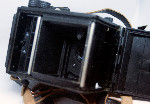
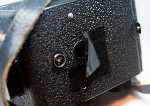
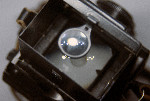


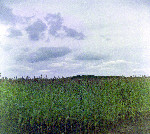

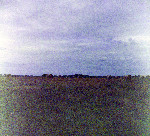




One Comment Add yours